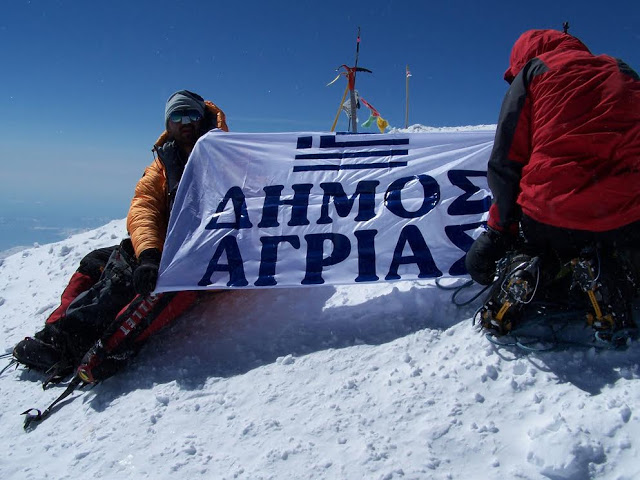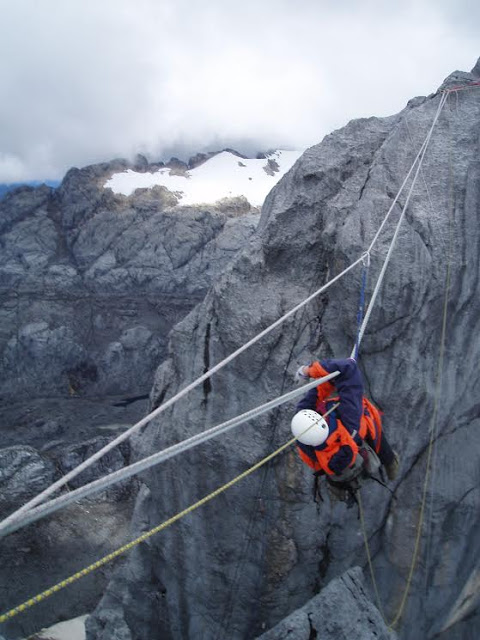
The Greek of the 7 summits
Nick Maggitsis is the only Greek mountaineer who has completed the project of the “7 summits”, reaching to the seven highest peaks on each of the seven continents. He is also the only Greek who has reached, while hiking, both the North and the South Pole. He has found and trained dozens of Greek champions in sport climbing and has organized and coached over 45 survival sports missions across the globe.
Also, as an Ambassador of the Olympic Volunteers for the Olympics of Athens, in 2004, he transferred the idea of Olympics spirit all around the world, for four years. Thus, the flag of the Olympic Games of 2004 was brought to the South Pole, in Antarctica, by the first hiking team in Greek history, in February 2003.
Μαγγίτσης Νίκος – 7 summits from Christos Tsoutsias on Vimeo.
Nick Magitsis was born in Volos, in 1968, is a professor of Sports Science and Physical Education with a Master’s thesis in reaction time at high altitudes and has attended dozens of seminars in the field of sport, sports tourism and outdoor activities. The fact that he started climbing with his PE Professor when he was a child in Agria, combined to his involvement in climbing and mountaineering in the Greek Mountaineering Club of Volos as a coach – with particular emphasis and sensitivity to young athletes – right after his studies in Physical Education in Komotini, brought him closer to a more comprehensive and scientific approach to mountaineering and climbing.
Since 1990, he organizes and accompanies hikers and “friends of the mountain and nature” throughout the world and, since 1994, he organizes and coaches expeditions. He also plans sports-survival missions worldwide – i.e. hiking desert-crossings and crossing-seas by marine kayak. His biggest dream had been to become the first Greek who completed the project of the “7 summits”, the ascent to the highest peak of each continent of the globe.
It all started from Pelion, a mountain with opportunities for long and short hikes, but also for numerous and difficult rock climbings. “I like Pelion so much; it inspires me to work out and strengthen my soul and spirit!” the alpinist says in an interview. He aimed at conquering the 6,000 meters high Mount Kilimanjaro, in Tanzania, along with three other mountaineers from Agria. “It was the first mission made by local climbers outside of Europe. Nothing could stop us” and their persistence was rewarded when, after -18° C and winds of 60km, they reached the top and looked at the view below Maventsi, a peak which had not been reached by another Greek until that time. “From that point on, my life got into a “climbing routine”. Every year, we organized and made new and more difficult ascents in all corners of the Earth”.
After that success, he traveled to the Himalayas of Kenya, in the Alps of Ecuador, at the North Pole, only to end up standing before the foot of Elbrus, a Russian mountain of 5,645 meters height, in August 2000.
The idea of conquering the “7 Summits” was not Nikos Magitsi’s. It was first suggested, in 1980, by Richard Bass, and the Greek alpinist found out about it in 2003 at the Antarctic, from one of the world top climbers, Conrad Anker, who met with the Greek mountaineer during the ascent of Vinson, a 4.897 meters ice mountain. So, having topped the South Pole, he decided to start striving for the great goal of the seven peaks.
Next was the highest mountain in the Andes, in South America, the Akounkagkoua peak at 6,962 meters. Nick Magitsis had physically exhausted himself in Antarctica and the doctor who examined him had strongly recommended that he returned home and rested. “You’re almost dead” he had told him. “I had lost 40 pounds” the mountaineer admits. Nevertheless, he continued completely unswayed by those words. “I was there to conquer the mountain”, and a difficult mountain that is. After an adventurous ascent, he managed to raise the Greek flag at the mountain’s peak.
Everest, the “mountain of mountains”, at 8,850 meters, was next in line. As a member of an international mountaineering mission, he stayed there 64 days with a temperature of -25° C and, reached the highest peak after nearly nine hours of ascent, on May 17, 2004, at 5:45 am. Next was the mountain Mak Kinley, in Alaska. His team and him, after a course of fourteen “white” days, while carrying more than 60 kg in supplies and equipment and with the temperature at -40° C, was able to see the Alaskan ice from 6.194 meters.
After the conquest of Kilimanjaro (5,895 m.), in Africa and El Bruce (5.642 m.), in Europe, the only top that was left was the Carstensz Pyramid, a mountain in tropical Papua (4884 m.), in Oceania. The Greek climber and his team, the Swiss Rupert Haider and the Belgian Robert Hugo, on March 17, 2008, arrived by helicopter at the base of the mountain. “I spent 30 hours hanging on the ropes at a height of 800 meters, during a blizzard. By the time I was on top, I got my satellite phone out and called my family crying. We all cry once” he admits.
Nick Magitsis has made climbing expeditions to unique regions of the world, such as the Barountse Mountain at 7.128 meters, the Himalayas at 8.848 meters, the Broad Peak at 8.051 meters, K2 in the Karakoram – the “murderer” mountain and the second highest mountain next to Everest – at 8611 meters. His experience, excellent training, careful preparation and integrity inspired associations and dozens of parents to entrust their children’s care in his hands, during some very difficult and dangerous missions -i.e. at Point Lenana, 4,985 meters (Kenya, Africa), 10 Greek young climbers with the 13-year-old Kostas Zambas, at Kilimanjaro (Tanzania, Africa), with the 16-year-old George Raios and the 17-year-old Apostolia Kontogianni and at Aconcagua (Argentina) 6,962 meters, with George Raios, aged 17, and Apostolia Kontogianni, aged 18 – who also are the youngest Greeks who reached 6,962 meters of altitude.
Other actions that are worth mentioning are his hike-crossing the Tunisian Sahara (180 miles in 90 hours in 2001), crossing the Salar de Uyuni, Bolivia (154 km in 54 hours in 2005) and his first winter-crossing the Aegean Sea with solo kayak, from Limnos to Volos (170 miles in 102 hours) in 2002.











